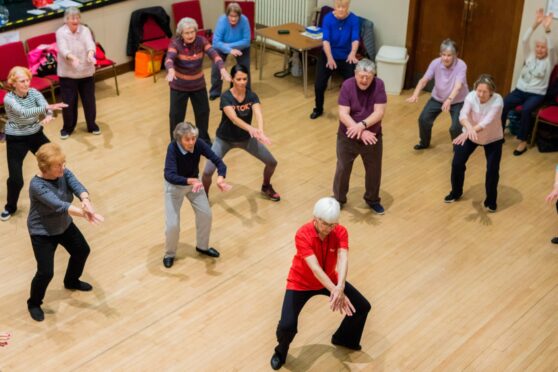High Life Highland is encouraging people living with Parkinson’s disease to participate in exercise classes across the Highlands.
In the region, there are currently nine classes running with up to 50 people joining in with exercises to help with stiffness and tremors, which are common symptoms of the disease.
A new class in Lochaber is set to begin on November 11, allowing residents living with Parkinson’s to get the benefits of exercise.
As with many classes, the programme was affected by restrictions due to the pandemic and instructors had to go digital to continue providing advice on how to safely exercise at home.
Online classes are still available for people who are unable to travel but face-to-face classes have restarted as restrictions ease.
The course will also offer a high-intensity class starting November 30.
According to Parkinson’s UK, around 1,500 people will be diagnosed with the disease this year, which is about 30 people each week.
‘I love to exercise, so it’s easy for me to go to class’
Cathy Orr, area development manager (Scotland) at Parkinson’s UK said: “It is well understood that if people can keep active it can significantly improve functional capacity, fitness and quality of life as well as reducing the risk of ill health, deterioration of the condition, risk of falling and even acute hospital admissions whilst also helping to manage symptoms.”
Research has shown that long-term fitness routines have improved the coordination and motor capabilities of those with Parkinson’s disease as well as improved their mental health.
Pam from Inverness, who has been taking part in classes said: “Without exercise, I don’t know where I’d be because I get very, very stiff and I don’t like sitting down very much – I like doing things and I’m on the go all the time and I think that helps.
“I love to exercise, so it’s easy for me to go to class. There is a variety of things they do and I enjoy the company and being with the others in the group.
“Apart from the social side of things, it’s always good to meet up with other people with Parkinson’s. You find out all sorts of things when you are talking to people – but online is also good because you don’t need to go in your car and go anywhere.”
To find out where your nearest class or how to access online classes click here.
